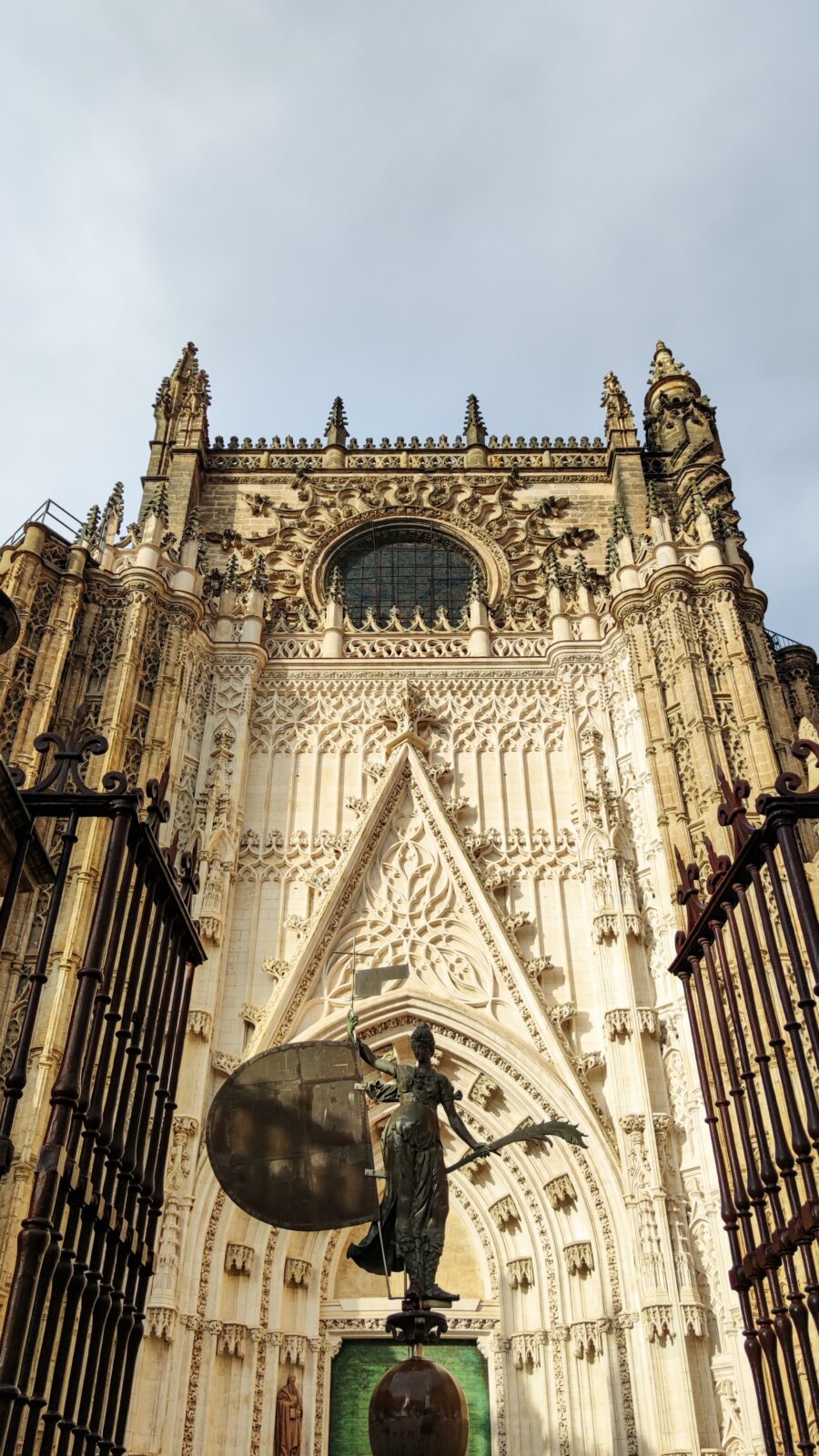This year is the 500th anniversary of the death of Hermann Zierenberg. The wealthy man’s will in 1523 revealed he had set aside money so that each year on the anniversary of his death homeless people would pray for his salvation and purportedly save him years in purgatory. As Zierenberg was dying, though, the tradition of buying prayers to reduce purgatory time was dying out in much of Europe.
One agent of change was Martin Luther, who said purgatory does not exist, so prayers for beloved ones to escape it are a waste of effort. Another was the enormous cost of grand cathedrals. I visited several years back the Seville Cathedral, known as the third-largest church in the world. It features the largest and richest altarpiece on earth, with 45 floor-to-ceiling gold-leaf, wood-carved scenes from the life of Christ. Silver sparkles in 80 chapels within the 253,000-square-foot interior.
“Serious bling,” one tour guide book observed. Bishops in the 1500s said the cathedral gave them a view of heaven. During a Mass the rich sat facing the dazzle. Behind them sat an ornate choir room and behind that stood the poor, who stood at the back of the cathedral. They said later that they had heard a Mass but had not seen it. Resentments built up century by century. During the 1936-1939 Spanish Civil War, left-wing forces killed nearly 7,000 priests, monks, nuns, and bishops.
Resentments are still present. I climbed the Seville Cathedral’s 343-foot bell tower and from it could see three miles east to the barrio of Los Pajaritos, the poorest neighborhood in all of Spain. Businessman Jose Antonio, who owns a fish market there, said “in almost three decades I had never seen so much misery, so many young people treated like dirt. … Politicians have no interest in finding real solutions.” Nor do some church leaders, residents say.
Five centuries ago ex-monk Luther wanted to find real solutions. In the 1500s Lutheran churches chose deacons assigned to helping the homeless gain skills and jobs. Matteo da Bascio, a monk who stayed within Catholicism, had a different idea of real solutions. He inaugurated in 1525 the Capuchin order of friars, named after the hoods—cappuccino— on the brown robes they wear. (I wrote last December about Kevin Crowley, a modern monk who in 1969 opened Dublin’s Capuchin Day Centre in Dublin and ran it for 53 years, until he retired last August.)
The Capuchins were radical in their resolve not only to feed the poorest but suffer with them. They vowed to own nothing, to wear only robes “made of poor quality cloth,” to “never sleep on a featherbed or on mattresses or between sheets or have a feather pillow under their head,” unless they were very sick. The Capuchins took seriously their vows of poverty. A 1536 discourse said Capuchins who observe those vows are in good circumstances and are certain of salvation when they die. Those who do not observe them “are damned when they die.”
The Capuchins also said the poor were not unemployed. The poor had a job— pray for the souls of those who gave them alms. They said the poor deserved for their work a salary of sorts, although it was called charity. Homeless people often went to jail unless they could pass a “beggars’ exam” testing their ability to recite the Lord’s Prayer, the Ave Maria, the Apostles’ Creed, and the Ten Commandments. (Donors wanted to be sure they received the prayers they paid for.)
The Capuchins deserve honor for their spiritual commitment and good intentions in living among and like the poor, but their disinterest in changing lives materially left many of their neighbors angry. During the Spanish Civil War an anarchist militia burned and sacked the Capuchin convent in Barcelona. The Capuchins in Spain never fully recovered from Marxist monkicide. Today, a few live in Barcelona and Madrid, but in Seville they reside in portraits on the walls of the art museum. I wonder about 21st century parallels to the Capuchins and the Hermann Zierenbergs. I’m impressed by those who voluntarily live with the poor. I’m also impressed by businesses that offer good jobs and a way to move out of poverty, by nonprofits that offer a trampoline rather than a hammock, and by churches that teach where rich and poor can find true hope.

